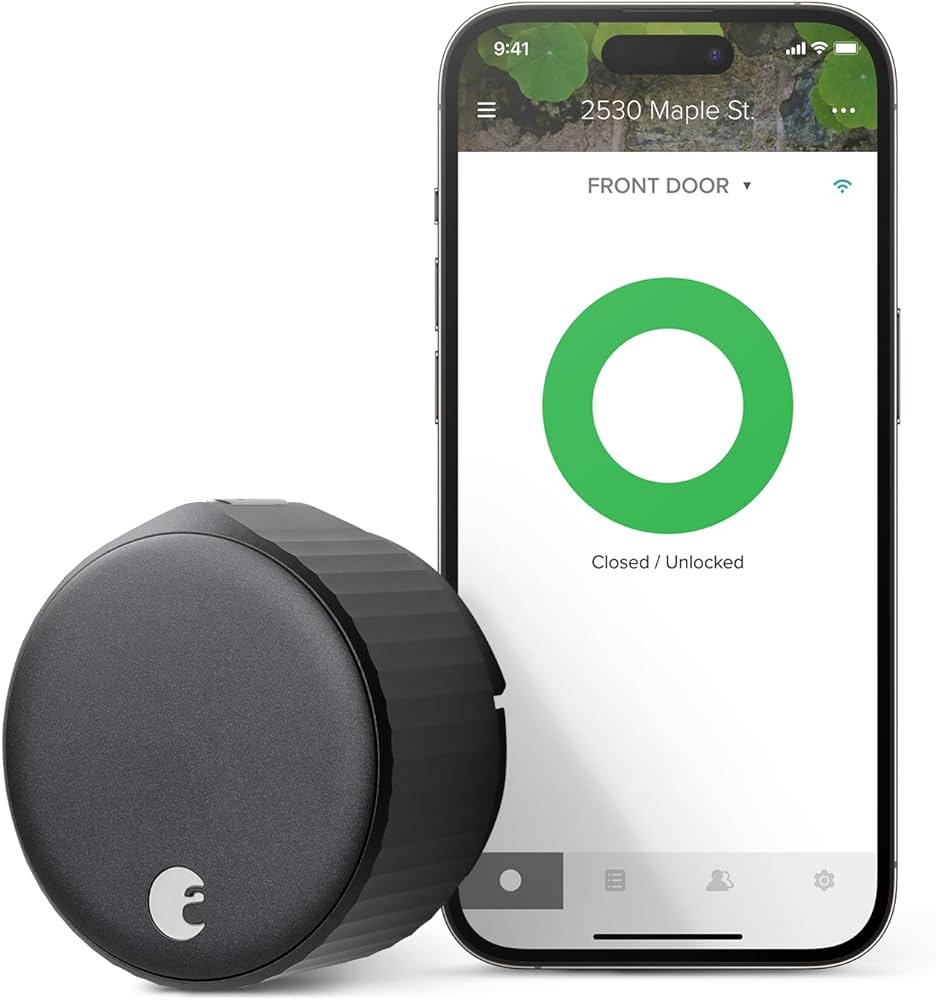Imagine coming home after a long day at work, looking forward to the comfort and security of your smart lock-equipped house. As you approach the door, a nagging thought crosses your mind – is your smart lock really as secure as you believe? Read Digital Door Lock in Hyderabad, Gurgaon & Delhi
With the rise of smart home technology, the question of whether smart locks are hackable has become increasingly prevalent. The convenience they offer is undeniable, but lurking beneath the surface are potential vulnerabilities waiting to be exploited.
So, how secure is your smart lock, and what measures can you take to ensure your peace of mind?
Smart Lock Technology Overview
- Smart locks are electronic devices that provide keyless entry to secure areas using various authentication methods. These devices offer a range of smart lock features such as remote access, voice control, and activity logs. Remote access allows users to lock or unlock their doors from anywhere using a mobile app, adding convenience and security. Voice control integration with virtual assistants like Alexa or Google Assistant enables hands-free operation, enhancing user experience. Activity logs keep track of who enters and exits the premises, providing insights into security.
- Encryption protocols play a crucial role in securing smart locks. Advanced encryption standards like AES (Advanced Encryption Standard) are commonly used to protect the communication between the smart lock and the connected devices. These protocols ensure that data transmitted between the devices is encrypted, making it significantly harder for hackers to intercept and decipher sensitive information. By implementing robust encryption protocols, smart locks enhance their security measures and safeguard against unauthorized access attempts.

Potential Security Vulnerabilities
- Security experts have identified several potential vulnerabilities in smart lock technology that could expose users to security risks. One crucial aspect is password protection. Weak or easily guessable passwords can make smart locks susceptible to brute force attacks, where hackers repeatedly try different combinations until the correct one is found. It’s essential for users to create strong, unique passwords to enhance the security of their smart locks.
- Another significant concern is Bluetooth vulnerabilities. Smart locks that rely on Bluetooth technology for connectivity can be vulnerable to attacks if not properly secured. Hackers could exploit Bluetooth weaknesses to intercept communication between the smart lock and the user’s device, potentially gaining unauthorized access. Ensuring that Bluetooth connections are encrypted and using the latest security protocols can help mitigate these risks.
Common Hacking Techniques
- To successfully breach smart lock systems, hackers commonly employ a variety of sophisticated hacking techniques. Social engineering is a method where hackers manipulate individuals into divulging confidential information that can be used to access smart lock systems. This could involve tricking users into sharing their passwords or other sensitive data through deceitful means.
- Phishing attacks are another prevalent technique used by hackers. Through fraudulent emails or messages, hackers attempt to deceive users into clicking on malicious links or providing personal information, which can then be used to compromise smart lock systems. By posing as legitimate entities, hackers can trick unsuspecting users into unwittingly granting them access to sensitive data.
- It is essential for users to remain vigilant against these common hacking techniques. Educating oneself about the signs of social engineering and phishing attacks, as well as implementing robust security measures such as two-factor authentication, can significantly reduce the risk of falling victim to such cyber threats.
Best Practices for Securing Smart Locks
- Implementing robust access control policies is crucial for enhancing the security of smart lock systems. When it comes to securing your smart lock, proper password management is key. Avoid using default passwords and ensure that your password is complex, unique, and changed regularly. Additionally, consider enabling two-factor authentication for an extra layer of security.
- Encryption standards play a vital role in safeguarding the data transmitted between your smart lock and connected devices. Always opt for smart locks that utilize strong encryption protocols such as AES (Advanced Encryption Standard) to protect your information from potential eavesdropping or data breaches.
- Regularly updating your smart lock’s firmware is essential for addressing any security vulnerabilities that may have been discovered. Manufacturers often release patches and updates to improve security and fix known issues, so staying current with these updates is crucial for maintaining the integrity of your smart lock system.
Future of Smart Lock Security
- When considering the future of smart lock technology, enhancing encryption standards and firmware updates will be pivotal in fortifying security measures against evolving threats. Biometric authentication, such as fingerprint or facial recognition, is poised to play a significant role in improving the security of smart locks. By integrating biometric authentication, smart locks can ensure that only authorized individuals can gain access, significantly reducing the risk of unauthorized entry.
- Furthermore, the integration of smart locks into the Internet of Things (IoT) ecosystem presents both opportunities and challenges for security. IoT integration allows for seamless connectivity and enhanced functionalities, but it also introduces new vulnerabilities that hackers could exploit. To address this, manufacturers will need to prioritize robust encryption protocols and regularly update firmware to patch any potential security gaps.
- In the future, smart lock security will rely heavily on continuous advancements in encryption technology, the implementation of biometric authentication methods, and proactive measures to secure IoT integration. By staying ahead of emerging threats, the future of smart lock security can be significantly strengthened.
Conclusion
In conclusion, while smart locks offer convenience and security benefits, they aren’t immune to hacking. It’s crucial for users to be aware of potential vulnerabilities and take proactive measures to secure their smart lock systems.
By following best practices such as using strong passwords, updating firmware regularly, and implementing additional security measures, users can mitigate the risk of unauthorized access to their smart locks. As technology continues to evolve, the future of smart lock security will likely see advancements to address these ongoing security concerns.


